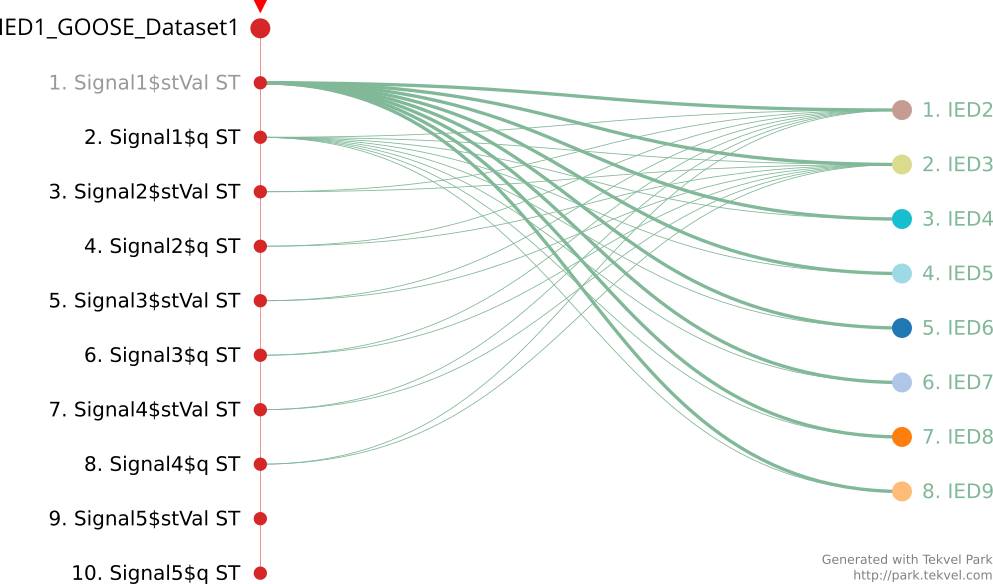GOOSE: one message with many signals vs many messages with few signals?
Here is the example of real project (IED and signal names are renamed), where the dataset of the GOOSE message is shown on the right, and the subscribing IEDs — on the left.
Here we can see, that not all the signals from the GOOSE are being processed with each device: e.g. Signal1, including its stVal and q are transmitted to each device IED2…IED9.

While the rest of the signals, i.e. Signal2…Signal5, are subscribed by IED2 and IED 3 only.

As an alternative to the taken solution we might have splitted the Dataset of the GOOSE-message into two Datasets and transmit them with two GOOSE-messages as follows:
- GOOSE with Signal1 data attributes only, subscribed by all IEDs.
- GOOSE with Signal2…Signal5, subscribed by IED2 and IED3 only.
Given thet the network is “transparent” (i.e. no network filtering for GOOSE-messages is applied) the proposed approach would result in increased network interface load of all subscribing IEDs, as they would have to process two GOOSE-messages instead of one, but (probably) the application-level load would decrease, due to smaller ammount of signals in each message.
It would be of a great interest for us to get comments from IED developers (taking specific approaches in IEDs into account) on the following questions:
- Given the “transparent” network (i.e. again no network filtering is applied), which approach would result in better pefrormance of IED2…IED3 and IED4…IED9: to have one GOOSE-message with all the signals included in dataset (as made in the project above) or split the data into two GOOSE-messages (as proposed)?
- If network filtering would be enabled and “unsubscribed” traffic would be restricted, would it increase the performance of non-subscribing IEDs dramatically (i.e. in the discussed case the second GOOSE-message, containing Signal2…Signal5 data attributes would reach network interfaces of IED2 and IED3 only) and would it make 2-GOOSE-message solution more advantegeous?
- If the case discribed here is not relevant (due to small amount of signals), then how many signals (approximately) would make it more relevant?

